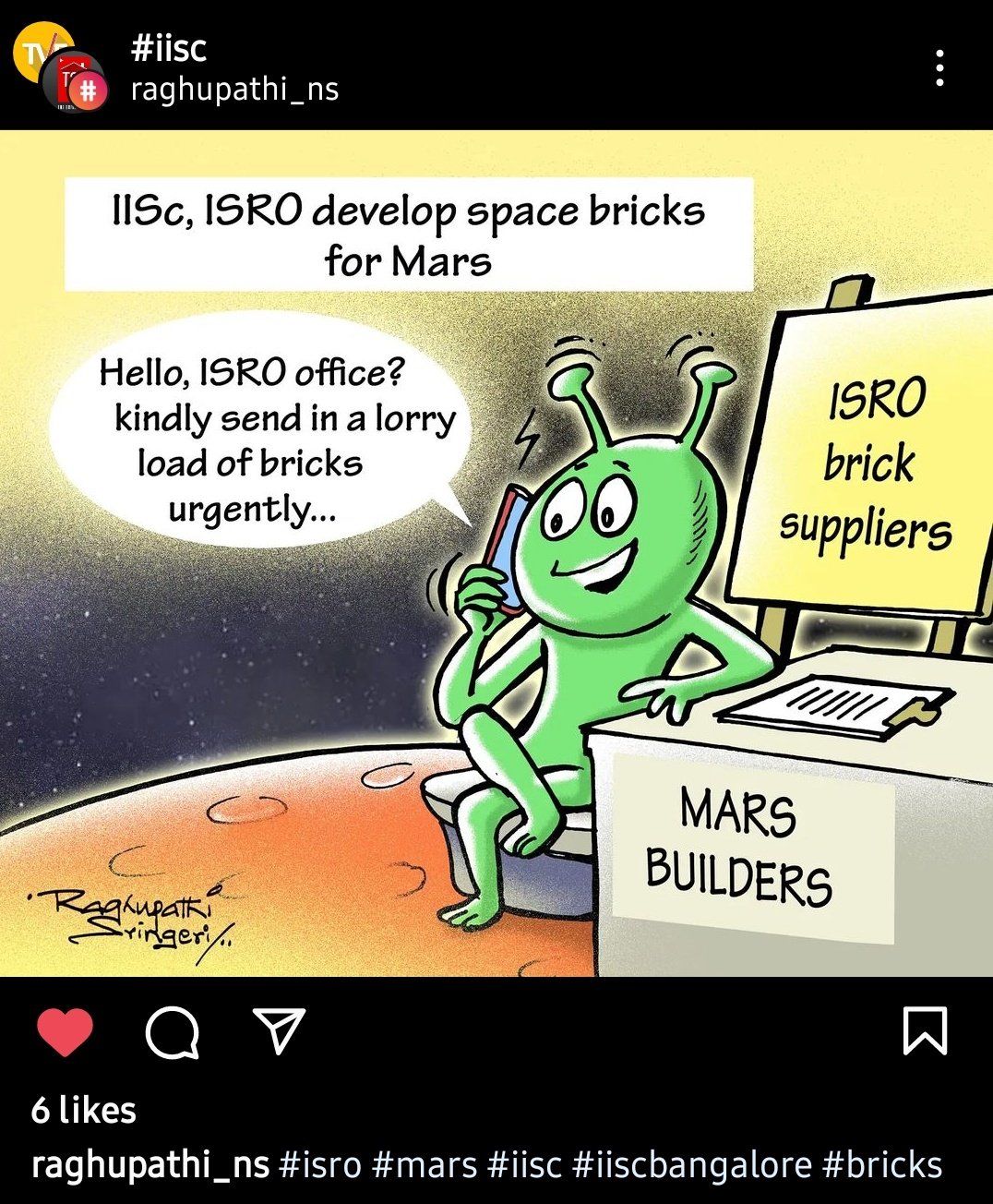Researchers based at the Indian Institute of Science (IISc) and the Indian Space Research Organisation (ISRO) have developed a unique way to make bricks for Mars, the red planet.
This will be done using the Martian soil, bacteria, and urea as per a release by IISc.
These ‘space bricks’ can be used to construct building-like structures on Mars to facilitate the first human settlement.
This research was first published in the peer-reviewed open access scientific journal, PLOSOne by a team comprising Aloke Kumar, Rashmi Dikshit, Koushik Viswanathan, and Nitin Gupta from the IISc, and Arjun Dey from ISRO.

Aloke Kumar the lead of the program at IISc Banglore told The Australia Today, “Initially when I used to talk about this idea people used to laugh. But I knew it will work, the only thing needed was a team that believed in the proposed product.”
He says, “I met Rashmi Dikshit when she was looking for openings after a long break of being a mother of two.”
“She understood the product straightway and even suggested a few great points in that short interview process,” said Aloke.

Aloke says Koushik is just like me, I was back from my research in Canada and he returned from the USA to develop indigenous products.
“We started working by learning from mother nature and utilizing the knowledge for future human settlements on Mars, Moon, or any other place.”
I must mention an important part of this team Arjun Dey, said Aloke.
“Arjun was the only person who didn’t laugh at the idea of Space brick when I told him about it and agreed to work on it,”
added Aloke Kumar.
The Product:
ISRO and IISc team made the mixture using Martian soil with guar gum, a bacterium called Sporosarcina pasteurii, urea, and nickel chloride.
“This slurry can be poured into moulds of any desired shape, and over a few days the bacteria convert the urea into crystals of calcium carbonate. These crystals, along with biopolymers secreted by the microbes, act as cement holding the soil particles together.”
This method, developed with the help of Koushik Viswanathan, Assistant Professor at IISc, ensures that the bricks are less porous.
“Martian soil contains a lot of iron, which causes toxicity to organisms. In the beginning, our bacteria did not grow at all. Adding nickel chloride was the key step in making the soil hospitable to the bacteria.”
Aloke Kumar, Associate Professor at IISc and one of the authors of the research paper, observes:
“The bacteria seep deep into the pore spaces, using their own proteins to bind the particles together, decreasing porosity and leading to stronger bricks.”
Earlier, other research teams have also made cylindrical ‘space bricks’ out of lunar soil using a similar method.

Rashmi Dikshit, a DBT-BioCARe Fellow at IISc and the lead author of the study, has previously worked on the lunar bricks. She notes:
“The device is being developed keeping in mind our intention to perform experiments in micro-gravity conditions in the near future.”
ISRO and IISc’s current slurry-casting method can produce bricks of complex shapes and sizes.

The research team is now planning to investigate how the atmosphere on Mars combined with low gravity affects the ‘space bricks’ by recreating conditions found on the red planet.
To achieve this, the researchers have constructed a device–MARS (Martian AtmospheRe Simulator) along with a lab-on-a-chip device that aims to measure bacterial activity in microgravity conditions.
These devices, with ISRO’s help, will also soon be sent into space to study bacterial growth in low gravity.




